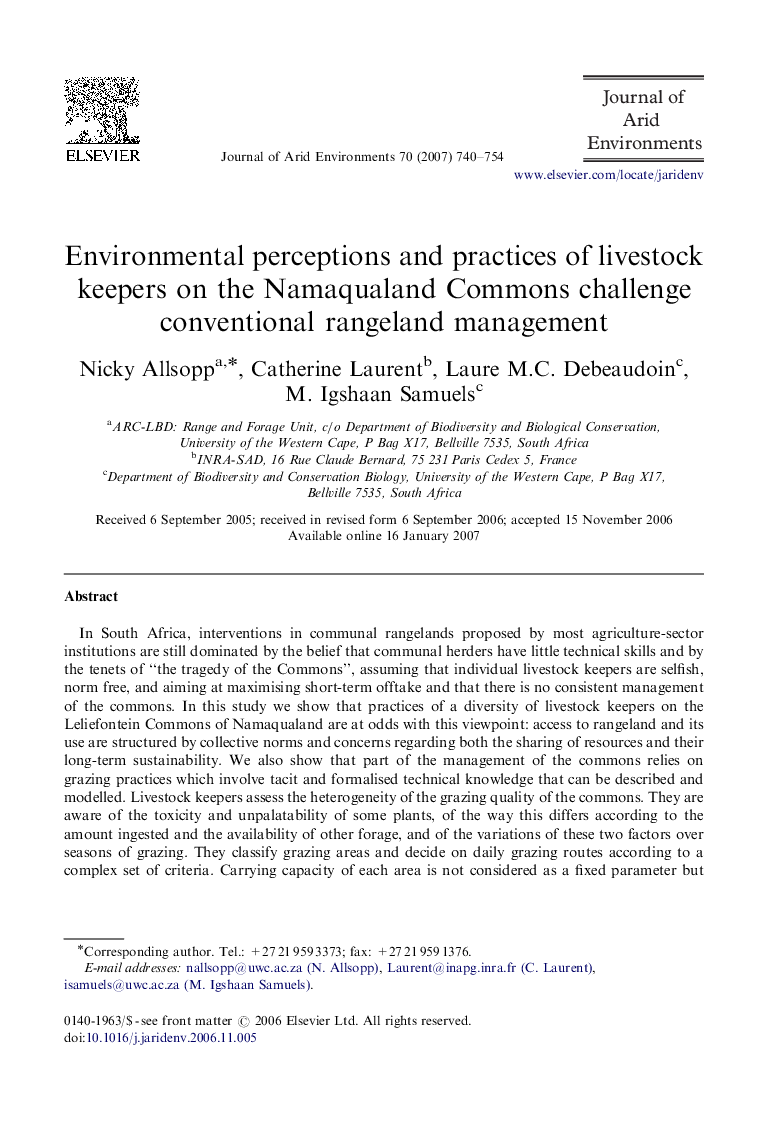| Article ID | Journal | Published Year | Pages | File Type |
|---|---|---|---|---|
| 4394323 | Journal of Arid Environments | 2007 | 15 Pages |
In South Africa, interventions in communal rangelands proposed by most agriculture-sector institutions are still dominated by the belief that communal herders have little technical skills and by the tenets of “the tragedy of the Commons”, assuming that individual livestock keepers are selfish, norm free, and aiming at maximising short-term offtake and that there is no consistent management of the commons. In this study we show that practices of a diversity of livestock keepers on the Leliefontein Commons of Namaqualand are at odds with this viewpoint: access to rangeland and its use are structured by collective norms and concerns regarding both the sharing of resources and their long-term sustainability. We also show that part of the management of the commons relies on grazing practices which involve tacit and formalised technical knowledge that can be described and modelled. Livestock keepers assess the heterogeneity of the grazing quality of the commons. They are aware of the toxicity and unpalatability of some plants, of the way this differs according to the amount ingested and the availability of other forage, and of the variations of these two factors over seasons of grazing. They classify grazing areas and decide on daily grazing routes according to a complex set of criteria. Carrying capacity of each area is not considered as a fixed parameter but rather as a variable dependant on rainfall. Seasonal movements between areas are designed accordingly. These findings offer a new perspective for research agendas on technical models and extension measures for communal rangeland management particularly in arid and semi-arid areas.
